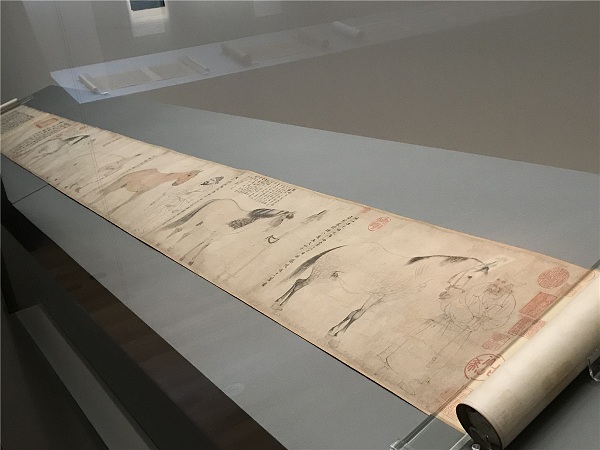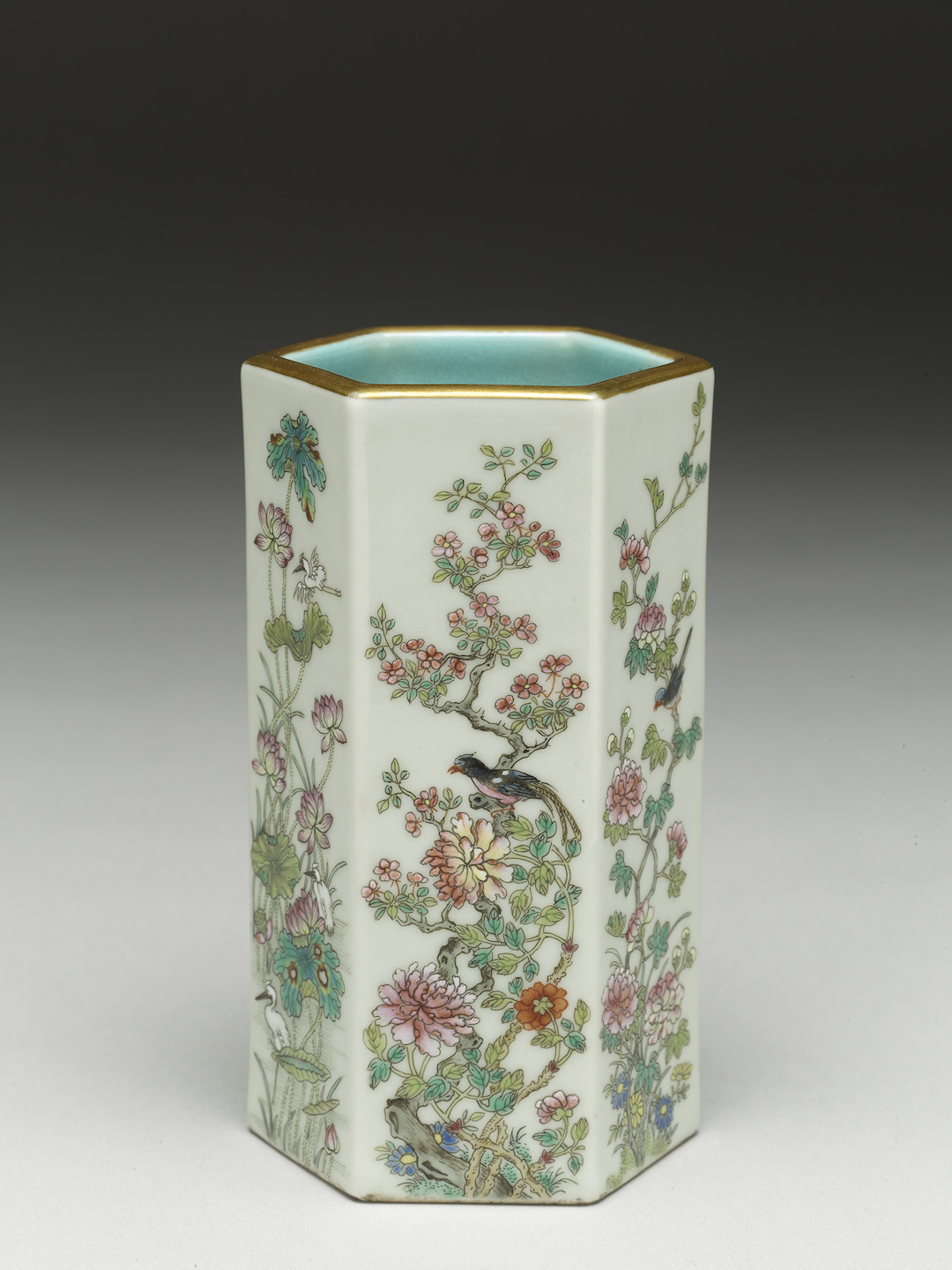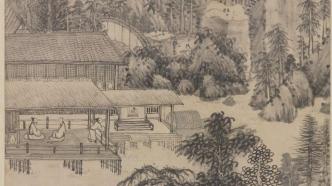
The Paper has learned that the southern branch of the National Palace Museum in Taipei has recently launched "The Leisure and Elegant Life of Literati", exhibiting 50 works including Qiu Ying's "Song Yin Qin Ruan" from the Ming Dynasty, Chen Hongshou's "Leaning on a Stick and Chanting Pictures", Wen Zhengming's "The Drunkard's Pavilion" and other 50 works. The exhibits, through these calligraphy and painting works, outline the leisurely and elegant life of ancient scholars.
In the daily imagination of ancient literati, in addition to studying poetry and calligraphy, the most common impression is probably of literary and artistic activities such as piano, chess, calligraphy, and painting. This exhibition presents the leisurely and elegant life of ancient literati through calligraphy and painting works from different dynasties, themes, calligraphy styles, forms and styles, including garden rooms, bamboo and calamus bonsais, tablets, tripod and Yi rubbings.
There are many pictures of garden rooms on display this time. Garden rooms depict the residences of literati, often expressing their self-identity and attachment to their homeland. In the paintings, scenes such as sitting around, feasting, watching flowers, and admiring the moon are often accompanied by relatives and friends, which are also portrayals of their ideal daily life. Paintings such as bamboo, stone and calamus bonsai may be corners of garden landscaping or home furnishings. When literati wrote the forms for these still lifes, they also conveyed the qualities they represented, such as being free and honest, or elegant. These paintings can not only be used for appreciation, but also as a carrier of self-encouragement and self-reflection.
Writing is the simplest and most direct way for literati to express their thoughts and emotions. Whether it is poems created, letters sent to relatives and friends, copied classics, or couplets decorated on walls, they can all show one's temperament and talents. Tablet tablets, Ding Yi and other rubbings reflect their collection and study of ancient epigraphic traces. The various seals on the works allow us to imagine how these literati were rubbing the seal stones, turning them over and playing with them.

Ming Qiu Ying Song Yin Qin Ruan
Under the tall pine trees beside the stream, the scholars took off their shoes and sat across from each other on animal skins to play the harp and plectrum, seeming to blend in with the sounds of nature. This reflects the elegance of the literati at that time as to where to play the instrument.
It can be seen from the title that this is the work of Qiu Ying, one of the "Four Families of Wu Clan", in 1549. The characters in the painting are depicted with barely discernible slender lines, which are reminiscent of the "ancient gossamer drawings" of Gu Kaizhi (about 345-406) of the Eastern Jin Dynasty recorded in the history of painting. They are extremely elegant and different from Qiu Ying's usual magnificent and exquisite painting style. , may be a wonderful adjustment made in response to the literati orderer's expectations for ancient meanings.

Liu Jue, Ming Dynasty, Qingbaixuan Picture
"Qingbaixuan" is the living room of Suzhou literati painter Liu Jue (1410-1472) in the early Ming Dynasty. In the summer of 1458, his monk friend "Master Xitian" brought wine and food to Qingbaizhai for a happy gathering, and asked Liu Jue to paint and write poems as a souvenir.
Liu Jue used gentle brushwork to place the studio in the painting within the landscape style of Wu Zhen (1280-1354), a scholar of the Yuan Dynasty. In the small house near the water, where the literati and the monks were sitting across from each other, they should be Liu Jue and the monk Xitian. The scholar leaning on the railing and looking out was Xue Ying, who was having fun and writing poems together. Liu Jue described in detail the screen in the house on the rear right. The painted bamboo hanging on the screen must be an artwork of special significance to him in Qingbaixuan.

Huang Bingzhong, Ming Dynasty, Shen Shi Xing Shi Shi Garden Picture
"Shishi Garden" is located in Suzhou. It is a garden built by Prime Minister Shen Shixing (1535-1614) after he became an official in 1591. In May of the 33rd year of Wanli (1605), at the request of his friend Xiang Shirui from Huizhou, Suzhou painter Huang Bing created the garden with apricot altar, willow pond, Taowu, water bamboo residence, peony pavilion, bamboo path, lotus pond, and chrysanthemum garden. , Give the leisure hall to be painted in ten sections. The left panel is paired with a poem written by Shen Shi in praise of the garden scenery. This type of album of literati garden rooms became a trend in the Ming Dynasty. From it, we can feel the literati's interest in building gardens and cherishing their residence, and we can also see the setting of the literati's ideal life.
The inscriptions and postscripts of this volume were written in rough strokes at the time of publication, and it is suspected that it was a copy based on the original work.
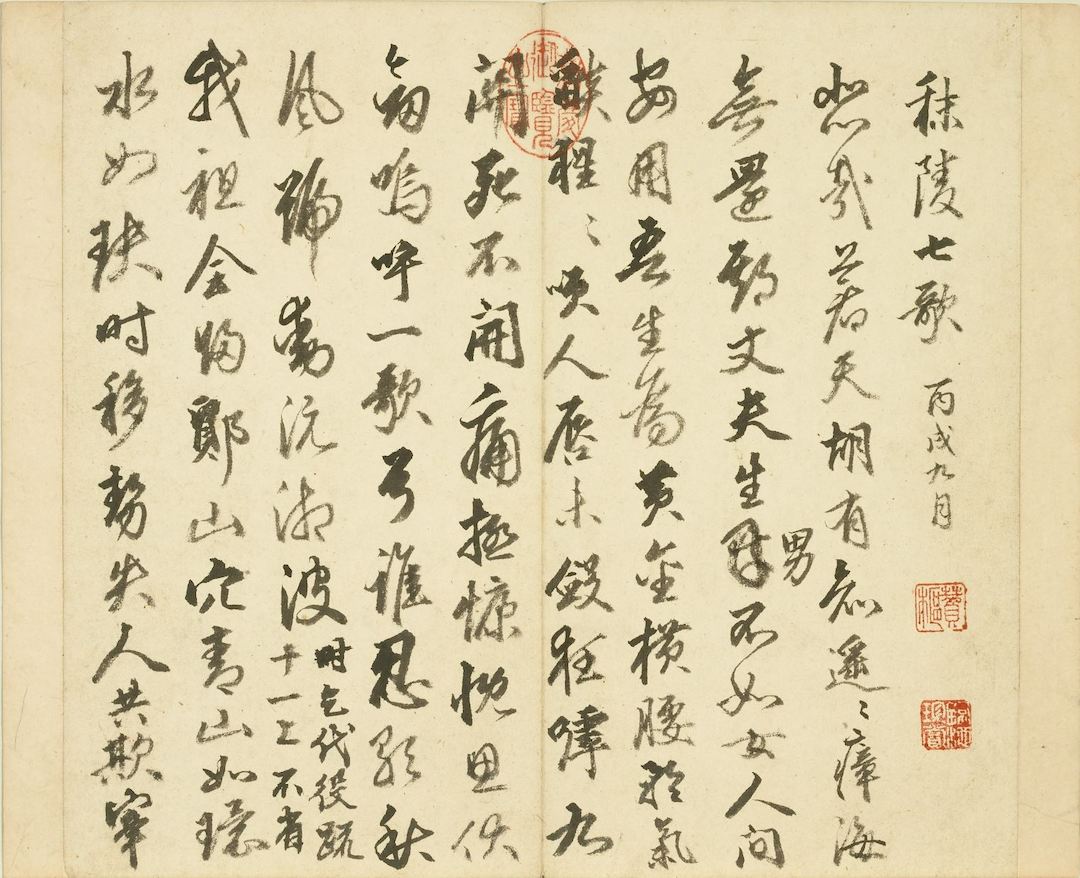
Mingfengfang Shumoling Seven Songs
Fengfang (1494-after 1565), a native of Ningbo, was a famous collector and calligrapher. His family was backward, his collection of books was scattered, and his life was poor. In addition to his copy of "Seven Songs of Moling", this work also contains two other works: "Cold Rain" and "Miscellaneous Narratives of Lying Sick on a Winter Night, Also Using Self-Repair". According to Fengfang's own knowledge, what he copied were all "sad words", and he was "without food for days and became increasingly ill". Even in such a dire situation, Fengfang's approach to asking for help from his friends remained elegant. He copied poems in a fast and vigorous calligraphy style, hoping to get help from Li Youxuan.
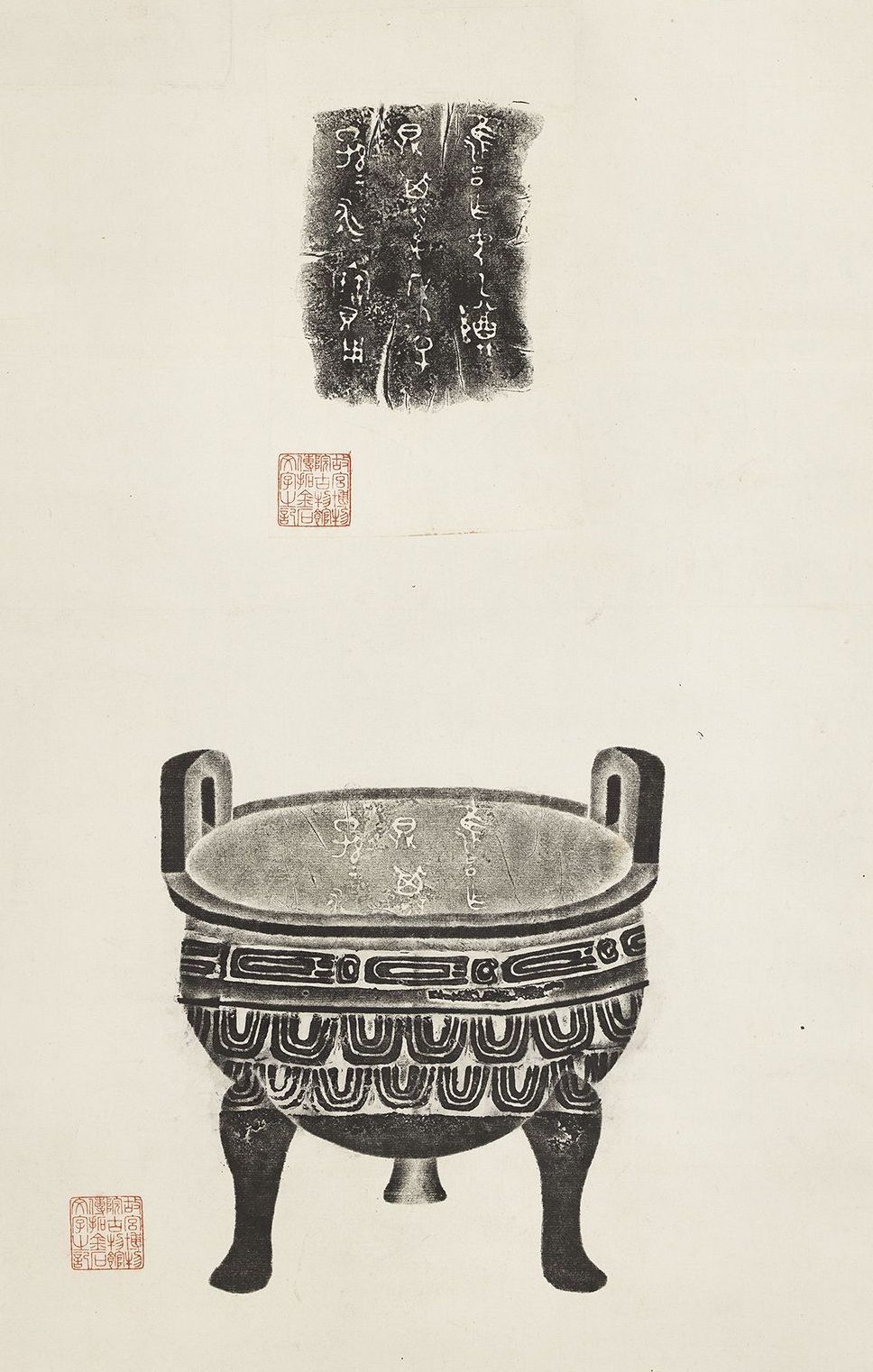
The Republic of China, the Palace Museum's tripod ink rubbings
"Full-shape rubbing" is a new rubbing method developed in the 19th century by rubbing parts of an object, cleverly arranging them, and adding painting to fill them in to provide a three-dimensional image that records the shape, decoration, and inscriptions of the object.
This piece was copied from the Yong tripod in the courtyard. It was actually an important copy at a time when photography was not yet developed. The exchange, trade, and discussion of rubbings on gold and stone tablets among literati can be seen since the Song Dynasty. It became a common practice in the late Qing Dynasty and continued until the Republic of China.
(The pictures and text in this article are based on the official website of the National Palace Museum in Taipei)
